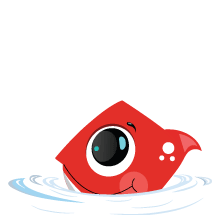THE DANCE OF AUTOMATICITY
- Finns BSC
- Dec 22, 2023
- 2 min read
Swimming isn't just fun; it's a life skill that every child needs to learn. As our young explorers take their first steps into the water, they learn how to float, kick, and do simple swimming movements. By doing these things over and over again, they become natural and ingrained in their muscle memory, like a graceful dance. Automaticity in swimming skills is great, but it also comes with some challenges that parents and teachers should be aware of so that our little water lovers can swim in a way that is safe and fun.

The Marvels of Automaticity are acts that become so natural that they can be done almost without thinking or much effort. For young learners, this magic happens when they train and do the same thing over and over again. As they improve their skills, they see some amazing things. Swimming skills become second nature, so they can concentrate on how much fun it is to glide through the water like playful dolphins. Splashes become confident strokes as they become smooth and orderly. Basic skills make them like loyal lifeguards who are ready to help them if they run into trouble in the water. With a good foundation, they're ready to learn more advanced swimming skills and strokes.
Even though there are so many great things about automaticity, it can also be hard. Automaticity can cause memory lapses; our brains forget things sometimes. For example, our little swimmers might forget certain steps or safety rules for a short time while they swim. It's normal, but you need to talk to them about it to make sure they're safe.
There are ways to stop forgetting things. Here are some good ways to help them remember how to swim. Keep repeating important safety rules, even if the person already knows them. Regular warnings about these important rules can help students remember them. Review and play with their swimming skills, old and new, on a regular basis to keep their memories strong and fresh. During swimming lessons, use fun visual and vocal cues to help them remember things. Make it fun by turning it into a game. Celebrate their successes after they swim! Reflection and positive feedback help them feel better about themselves and remember things. Introduce fun tasks or games that involve swimming to keep our young swimmers alert and focused.
Watching our young children learn to swim is like witnessing a beautiful dance of automaticity. As their skills become second nature, they glide through the water with grace and confidence. While occasional memory lapses are natural, these strategies will keep their swimming memories sharp and ensure a safe and enjoyable experience. So, let's encourage our little water enthusiasts to dive into the wonders of automatic swimming skills. With patience, encouragement, and lots of fun, they'll not only master swimming but also develop a lifelong love for the water! Happy swimming grows from happy learning!

























